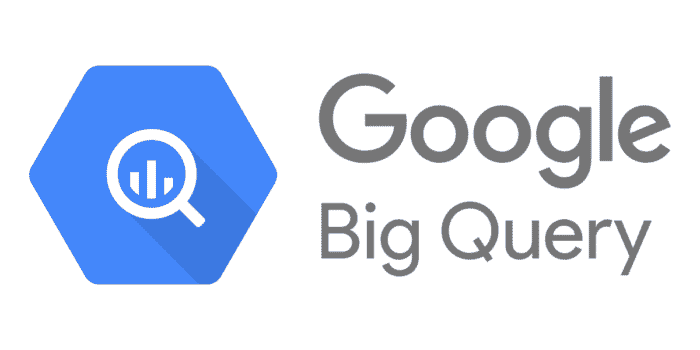Cloud Data Warehouse
Cloud data warehouses (DWs) enable organizations to store massive amounts of data across cloud servers and access them from anywhere in the world — even with limited resources. Learn more about what cloud warehouses do and top providers in this definition:
In this definition...
What Is a Cloud Data Warehouse?
A cloud data warehouse is a central repository of information managed by a cloud service provider and hosted in the cloud. Cloud data warehouses retrieve data from multiple sources and store it in a systematic way.
DWs are primarily built for business intelligence (BI) purposes to help organizations make informed business decisions based on data analytics. In contrast to traditional, on-premises data warehouses, cloud data warehouses offer more flexibility and reliability, as businesses scale to meet the ever-changing demands of end users.
What Do Cloud Data Warehouses Do?
Cloud data warehouses deploy the computing power and storage space of the cloud to consolidate historic as well as current enterprise data from diverse sources. This consolidation helps enterprises to perform analytical querying and reporting. The data may be structured, semi-structured, or unstructured. And the sources may include marketing or sales platforms, CRM tools, Internet of Things (IoT) devices, and point-of-sale (POS) transactions.
Other key features of a cloud data warehouse include:
- Flexible SQL querying
- Massively Parallel Processing (MPP)
- Data integration with ETL and ELT
- Data quality and cleansing tools
- BI integrations
- Columnar data stores
- Data storage and capacity management
- Automatic data backup and encryption
- Compliance tools
Cloud Data Warehouse vs Traditional Data Warehouse
A traditional or on-premises data warehouse requires a physical location as well as hardware, server rooms, and technical staff for its operation.
With most operational and relational data already moving to the cloud, more end users are migrating their data warehouses to the cloud for high-speed, low-cost data processing and easy business scalability. Traditional DWs are not flexible enough to scale, handle raw data, and meet fluctuating demands of users.
Let’s compare both below:
| Cloud DW | Traditional/on-premise DW | |
| Cost | No hardware cost. Pay-as-you-go model based on cloud storage requirements. | Initial setup cost. Hardware, manpower, repair, & maintenance costs. |
| Scalability | Easy up- or down-scaling. | Rising storage needs require more hardware and physical storage space. |
| Security | Cloud provider ensures data security. | More data control potential, but skilled staff is needed to secure it. |
| Availability | Most cloud providers ensure over 99% uptime. | Depends on hardware and IT staff efficiency. |
| Governance | Risks of moving sensitive data across the cloud while complying with regulations. | More control over data, with better governance & regulatory compliance. |
What Are the Benefits of Using a Cloud Data Warehouse?
Cloud data warehouses enable organizations to better understand their customers’ journeys by generating valuable analytics from various sources. By coupling the power of data warehousing and the flexibility of the cloud, enterprises can gain a competitive advantage.
Here’s a list of some benefits that cloud data warehousing offers:
- Hassle-free data management: Organizations can focus on their core business and growth strategies by leaving the hassles of data storage, management, and security to the cloud provider.
- Better scalability: With the cloud’s elasticity, businesses can expand or reduce their capacity based on fluctuating demands of customers.
- Cost-effectiveness: Users can avoid the costs associated with hardware, server rooms, manpower, maintenance, upgrades, overhead, and installation.
- Faster insights with ML & AI: By employing the power of machine learning (ML) and artificial intelligence (AI), organizations can perform predictive analysis for smarter business decisions.
- High speed & performance: With high processing power and uptime, cloud data warehouses can handle various data streams and perform high-speed queries.
Top Cloud Data Warehouse Solutions
Choosing the right cloud data warehouse depends on several factors, like business scalability needs, budget constraints, available integrations, and speed and security requirements. Let’s look at the features, pros, and cons of a few top solutions:
Google BigQuery

Google BigQuery is a serverless, multi-cloud data warehouse that processes terabytes of queries in seconds. It also provides useful analytics with features such as machine learning and business intelligence.
BigQuery integrates with several BI tools like Google Data Studio, Looker, Tableau, Microsoft Power BI, and Kubernetes. Google Cloud’s security best practices and identity and access management (IAM) also factor into the solution to support data security.
On the downside, Google BigQuery offers limited customization capabilities and costs build up as more queries are added. There’s also a steep learning curve for understanding the user interface and SQL syntax.
Amazon Redshift

Hosted by Amazon Web Service (AWS), Amazon Redshift is a fully-managed, petabyte-scale data warehouse that uses SQL to analyze structured, semi-structured, and unstructured data. It’s an ideal solution for businesses already using AWS, especially if they require massively parallel processing capabilities. Anyone who understands PostgreSQL can easily get started with Redshift.
Unlike BigQuery, Redshift is not a serverless, multi-cloud, or 100 percent managed solution. Also, the learning curve is steep and costs are high for faster query processing. Some users have also faced issues with database optimization, integration, and workload management (WLM).
Snowflake

Snowflake integrates with major public cloud providers like Azure, AWS, and Google Cloud Platform (GCP). It allows independent scaling of computing and storage resources, so customers can pay based on their requirements. With its unique multicluster architecture, Snowflake concurrently manages queries from different virtual warehouses without affecting the processing speed.
Snowflake can be expensive for large datasets. Also, the user interface is sometimes considered clunky, and integration can be difficult with third-party tools.
Interested in getting started with a cloud data warehouse? Explore the Top Cloud Data Warehouse Companies here.

